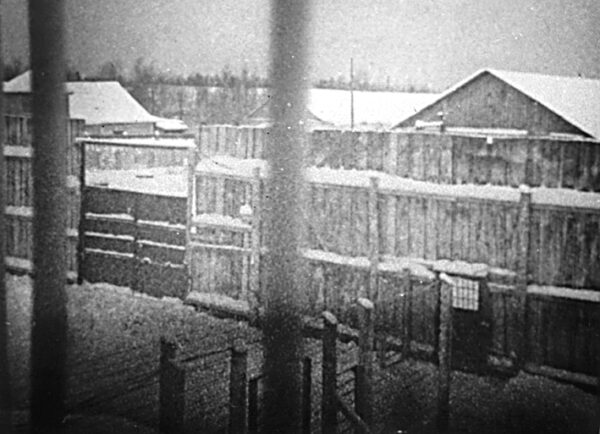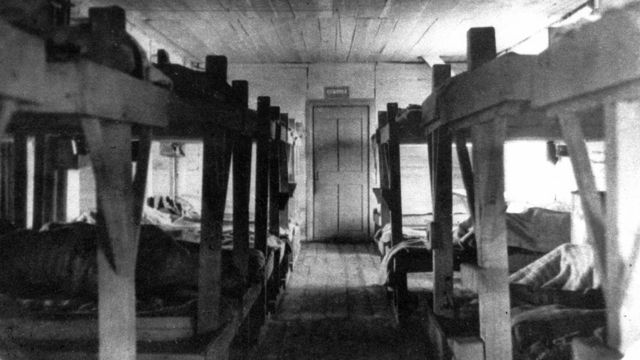“The history of the Perm Region is closely connected with the history of the Gulag. With some degree of conditionality, we can say that the Gulag was born here and it ended here.
At the end of 1925, in the north of the region, the Vishera branch of the Solovetsky Special Purpose Camp (SLON) was created, the prisoners of which were first used in logging and construction of the Vishera paper-pulp-chemical plants. And in the late 80s of the twentieth century, it was in the Perm Region that the last camps for political prisoners in the USSR, which were the heirs of the Gulag, were liquidated.
Forest corrective labor colony No. 6 (ITK No. 6), built in 1942 in the vicinity of the town of Chusovoy, occupies a special place in the history of the Gulag. In 1972, it was on the basis of ITK No. 6 that Perm-36, one of the most famous political camps of the USSR, was formed”.
From the book by Leonid Obukhov “Perm-36. Prehistory”

Camp Perm-36 in 1977
The system of the GULAG – the Main Administration of the camps – consisted of correctional labor camps, correctional labor colonies and prisons. Camps and colonies differed from each other primarily in terms of imprisonment: in camps up to twenty-five years, in colonies much less. In everyday life, all of them — both camps and colonies – were called camps. In them, prisoners worked outside the camp zones, could move freely inside the camp fences in their free time, and were required to stay in barracks only at night. “Those convicted of the most dangerous crimes” who were kept in locked cells around the clock served their sentences in prisons. Correctional labor colony No. 6 of the UITLK of the Ministry of Internal Affairs of the Molotov region was established in 1942. Until 1946, it changed its location several times. The main work of her prisoners was logging. In 1953, after Stalin’s death and the mass amnesty, the colony’s contingent changed dramatically — it concentrated convicted law enforcement officers: police, prosecutors and courts, NKVD-Interior Ministry officers who served in correctional labor camps and colonies, including some convicted of carrying out repressions under Stalin. In 1972, these prisoners were transferred to another place, and convicts were brought to the zone on charges of committing particularly dangerous state crimes, mostly in anti-Soviet agitation and propaganda. In 1980, a special regime section was created in the camp, in which prisoners were kept, as in prison, in locked cells around the clock. From that time until the end of the communist regime, the Perm-36 camp was one of the main detention centers for Soviet political prisoners.
This section of the virtual museum presents three main periods in the history of the camp, best known as Perm-36:
- The period of the GULAG, which officially operated until the death of Stalin (1942 – 1953)
- The period of detention in the camp of convicted law enforcement officers, when it was called the “cop zone” in criminal circles (1953 – 1972)
- The period when the Perm-36 camp was one of the main detention centers for Soviet political prisoners (1972-1988)


